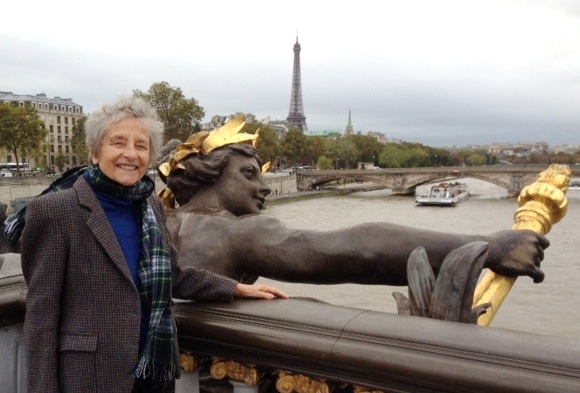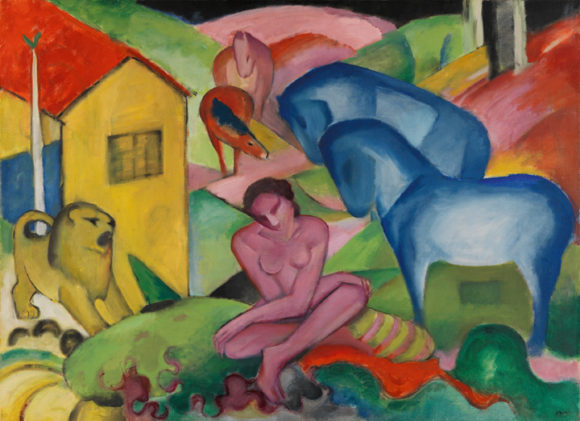
The exhibition titled Franz Marc / August Macke. The Adventure of the Blue Rider (der Blaue Reiter) at the Musée de l’Orangerie is the exhibit to see this spring when in Paris. It is a festival of colors by two German artists, Macke (1887-1914) and Marc (1880-1916), who both died prematurely on the front during World War I more than a century ago.
Long overdue, and shamefully so – I believe all art historians would agree – Macke and Marc have never before been shown in France in an exhibit dedicated exclusively to them. The event opened first at the Neue Galerie of New York, then will remain in Paris until June 17. The curators have made a few changes, particularly stressing the connection with the Blaue Reiter movement and the relationship with other European avant-gardes, particularly the fauvism and cubism in France.
After writing an article myself on April 11 2015 on this very site, it was pure pleasure to see the original works hanging in the spacious lower level rooms of the Orangerie Museum in the Tuileries gardens.

Although they are shown together, the two artists have distinct personalities and styles. They first met in January 1910 and became close friends until the war. Macke lived in Bonn on the Rhine in central Germany. Marc, with the Russian artist Wassily Kandisnky and his companion Gabriel Munter and other members of the Blaue Reiter, loved Bavaria in southern Germany. He settled first in Mirnau, about 40 miles south of Munich, then on Lake Kochel.
At a time when Europe is currently torn by political fractures, when the closeness of France and Germany is crucial to the survival of the continent, this exhibit has a strong symbolic meaning. The European Union was founded on a determination to put an end to all wars. What a powerful message when the art of these two young men is displayed together in an exceptional exhibition in Paris, considering, ironically, both men loved France and its culture, and yet died fighting against the country they revered.